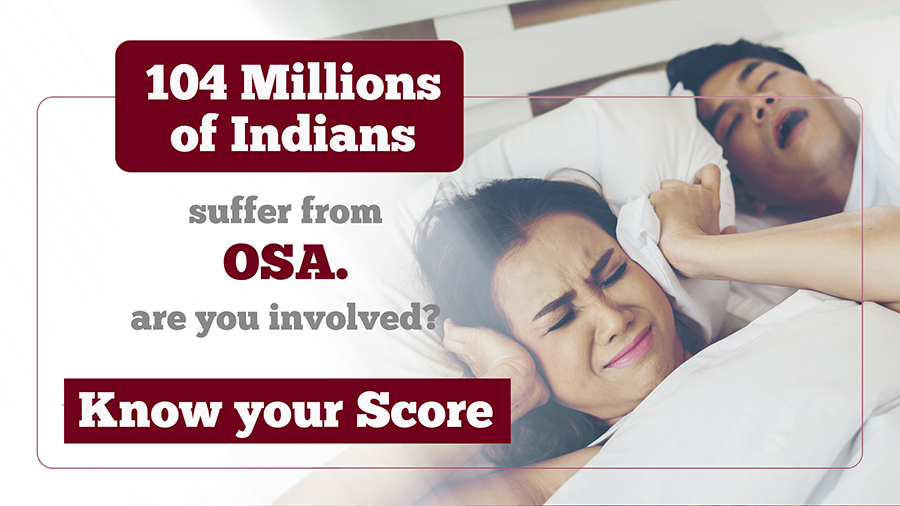
Obstructive Sleep Apnea (OSA) is a common sleep disorder that is characterized by repetitive episodes of partial or complete upper airway obstruction during sleep, resulting in intermittent hypoxia and sleep fragmentation. This results in repetitive cessation of breathing and frequent arousal from sleep.
The condition can lead to significant health complications if left untreated, making early diagnosis and management important.
To know more about Sleep Disturbed Breathing / Obstructive Sleep Apnea, visit this link.
Early detection and treatment of OSA is important to reduce symptoms and reduce the risk of associated disorders. A sleep study called polysomnography is the best way to diagnose OSA. However, this sleep test requires a night of sleep in a sleep lab/or the assistance of a sleep technician. And there may be financial costs associated with it. Therefore, it may not be practical to perform this test in all people with OSA, and its time lag may delay diagnosis and treatment.
So, to identify people who might benefit from obstructive sleep apnea testing, researchers have developed simple questionnaires called the STOP-Bang Questionnaire and the Epworth Sleepiness Scale.
STOP-Bang Questionnaire
The STOP BANG questionnaire was initially designed as a rapid and straightforward tool for identifying patients at risk of OSA before undergoing surgery. This was prompted by the potential complications and adverse events associated with untreated OSA during surgical procedures.
The advantage of the STOP-BANG lies in its simplicity; it’s a brief questionnaire that can be swiftly completed. The acronym represents a set of questions, where answering ‘yes’ accrues a point, while a ‘no’ does not.
A low STOP BANG score doesn’t necessarily exclude the possibility of a sleep-related breathing disorder. Generally, the test exhibits strong sensitivity in detecting moderate to severe OSA with a score of 3 or more, accurately identifying a significant number of patients with the condition. However, its specificity is relatively low, emphasizing the need for additional testing.
Epworth Sleepiness Scale
Patients experiencing excessive daytime sleepiness, a common symptom in various sleep disorders, can benefit from the Epworth Sleepiness Scale (ESS), developed by Dr. Murray Johns at the Epworth Hospital in Melbourne. This screening tool serves to assess a patient’s overall level of sleepiness, helping identify potential sleep disorders as the underlying cause of their issues.
The ESS has emerged as the standard assessment tool for evaluating symptoms of sleepiness due to its efficiency and simplicity. It consists of a quick questionnaire that provides a generalized indication of an individual’s average sleepiness. While the ESS itself is not a diagnostic tool, it plays a crucial role in guiding physicians and sleep medicine professionals. They use it to determine whether a patient should undergo a sleep study to diagnose or rule out sleep disorders impacting their daily sleep.
Comprising 8 self-administered questions, the ESS prompts respondents to rate, on a 4-point scale (0-3), their typical likelihood of dozing off or falling asleep during eight different activities. Although not necessarily performed daily, these activities are commonly engaged in by most individuals. The final score, ranging from 0 to 24, is obtained by summing up the points assigned to each “chance of dozing” response.
Primarily employed to validate symptoms associated with sleep apnea, narcolepsy, and idiopathic hypersomnia, the ESS proves instrumental in confirming the presence of excessive daytime sleepiness—a prominent symptom in these sleep disorders.